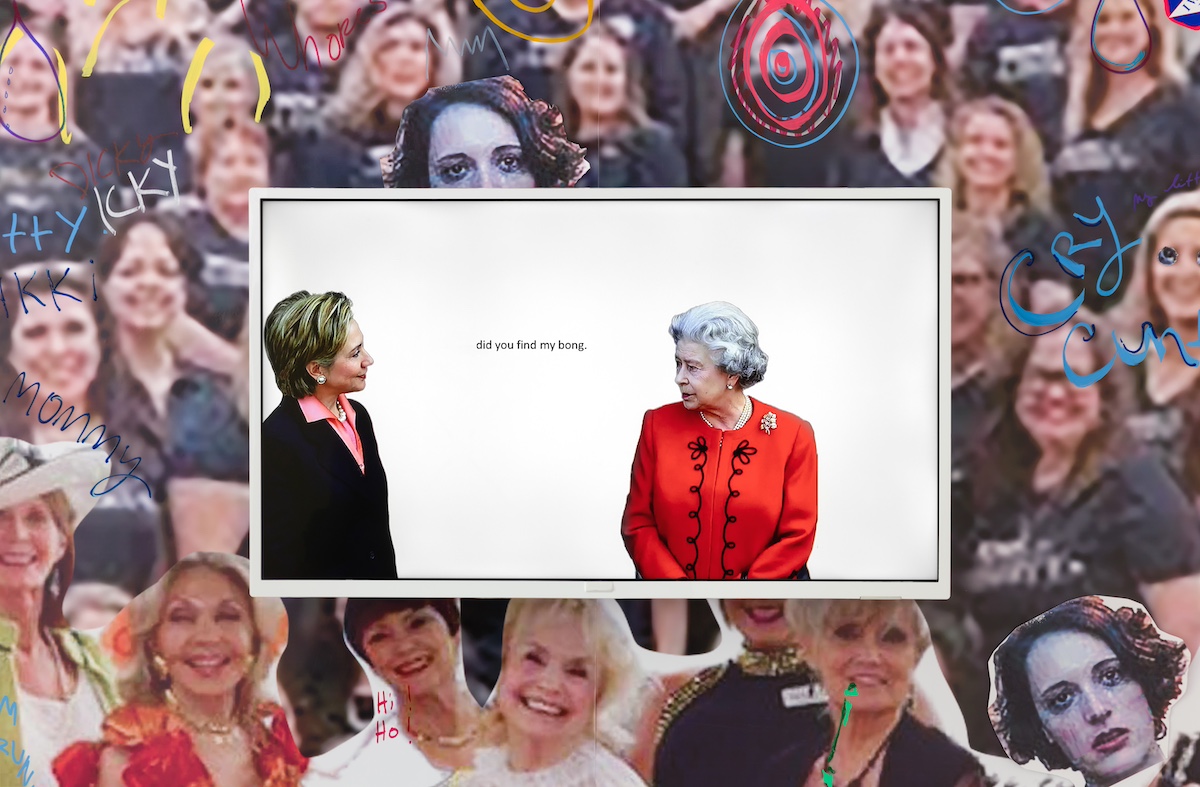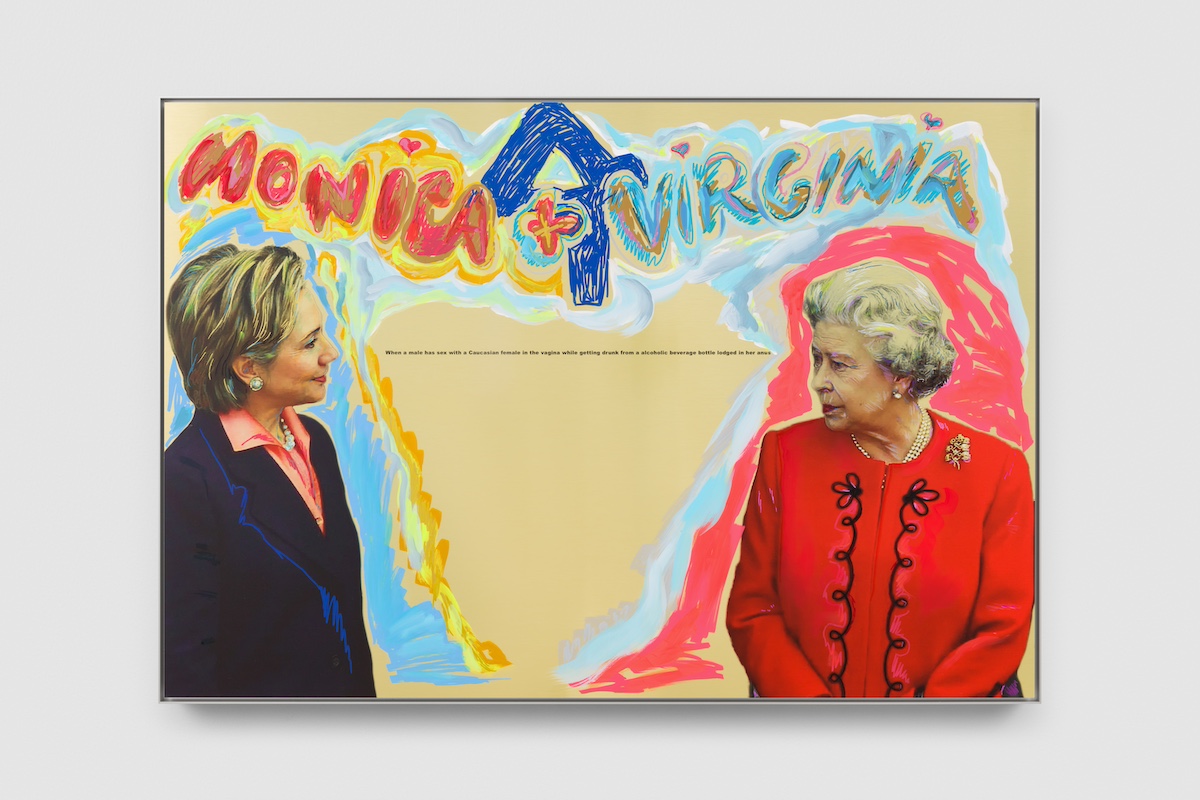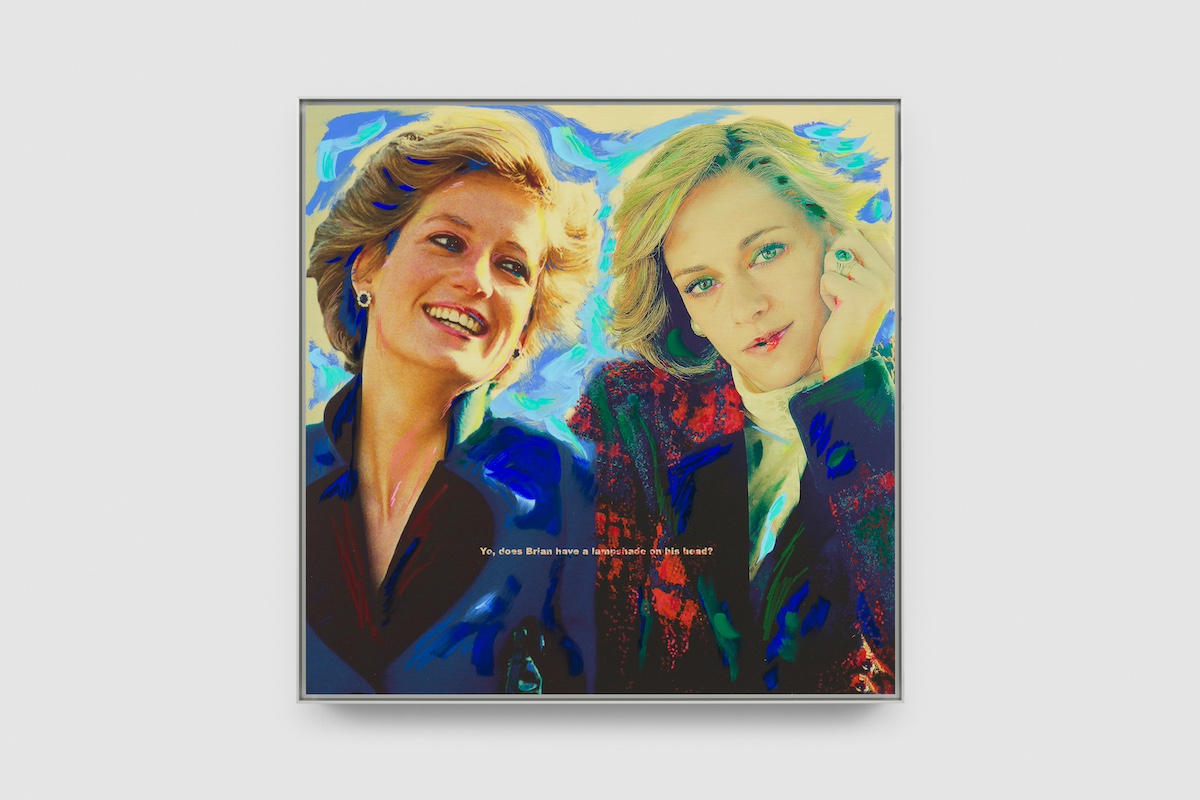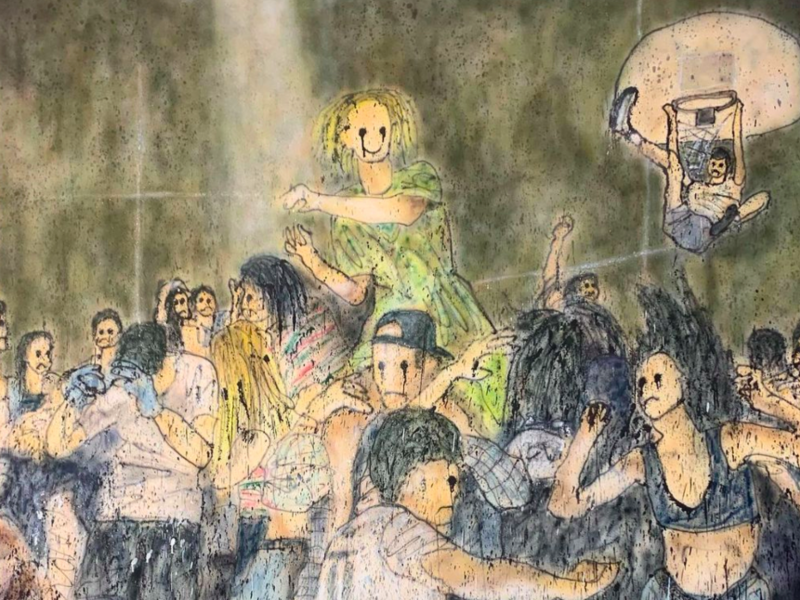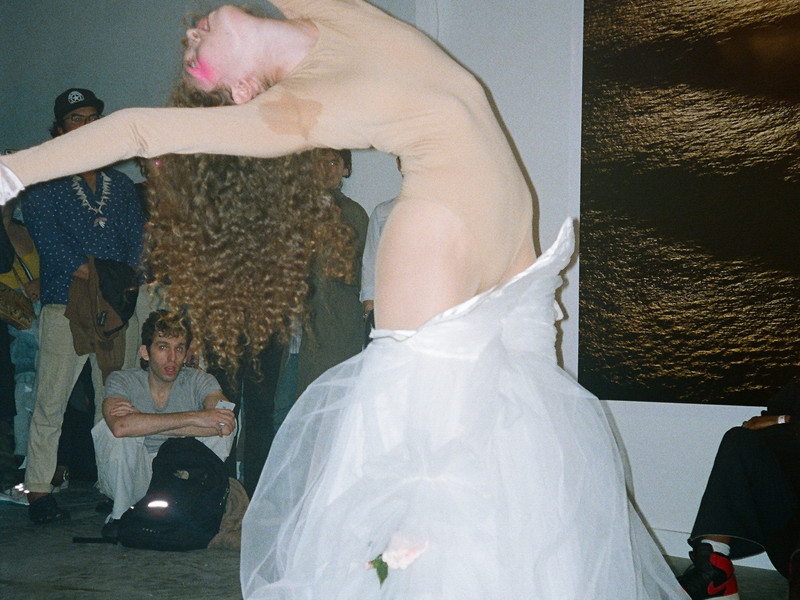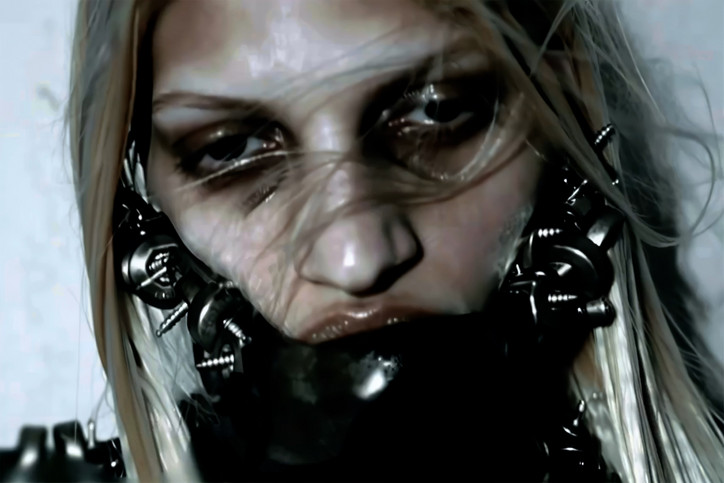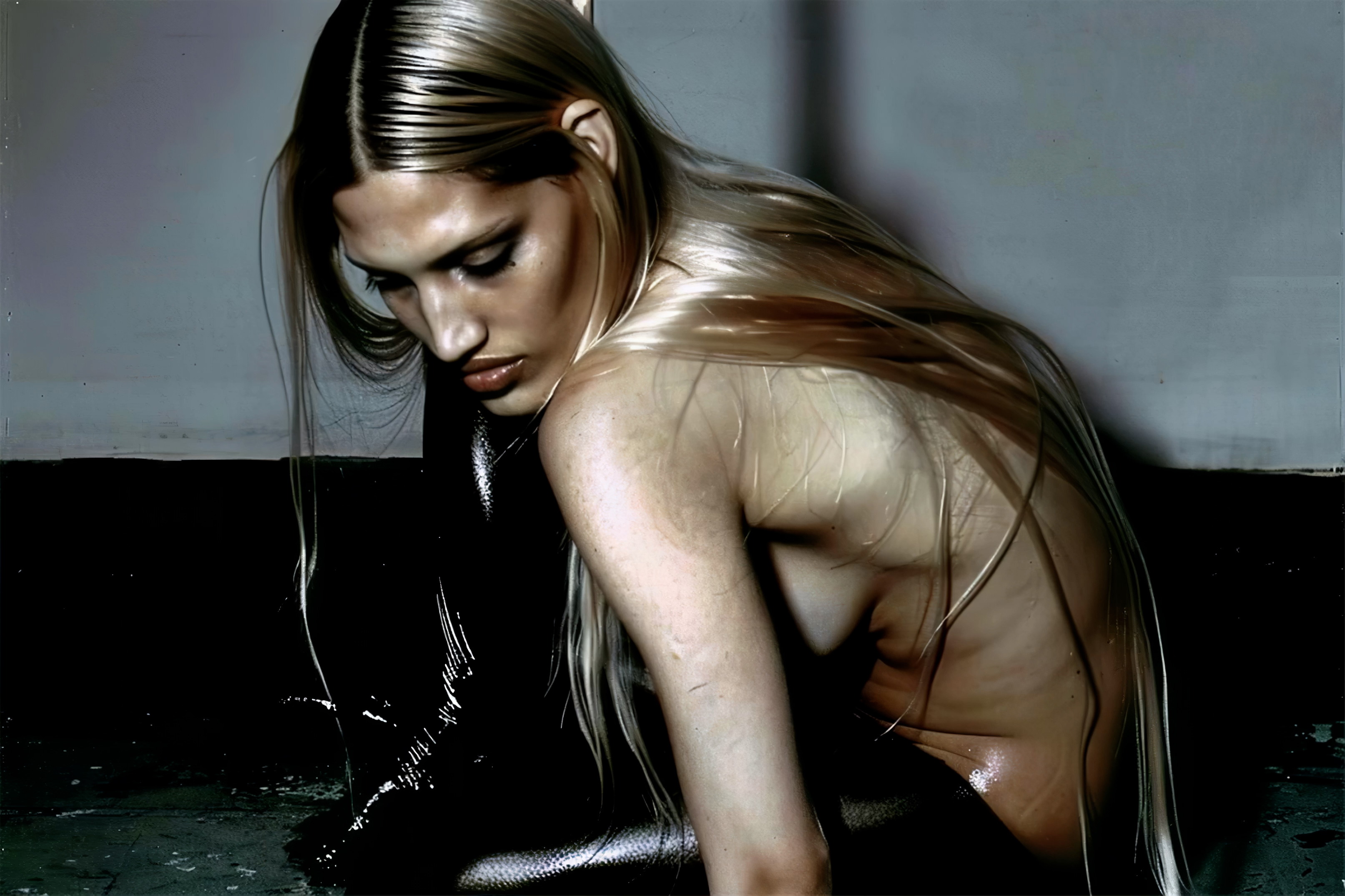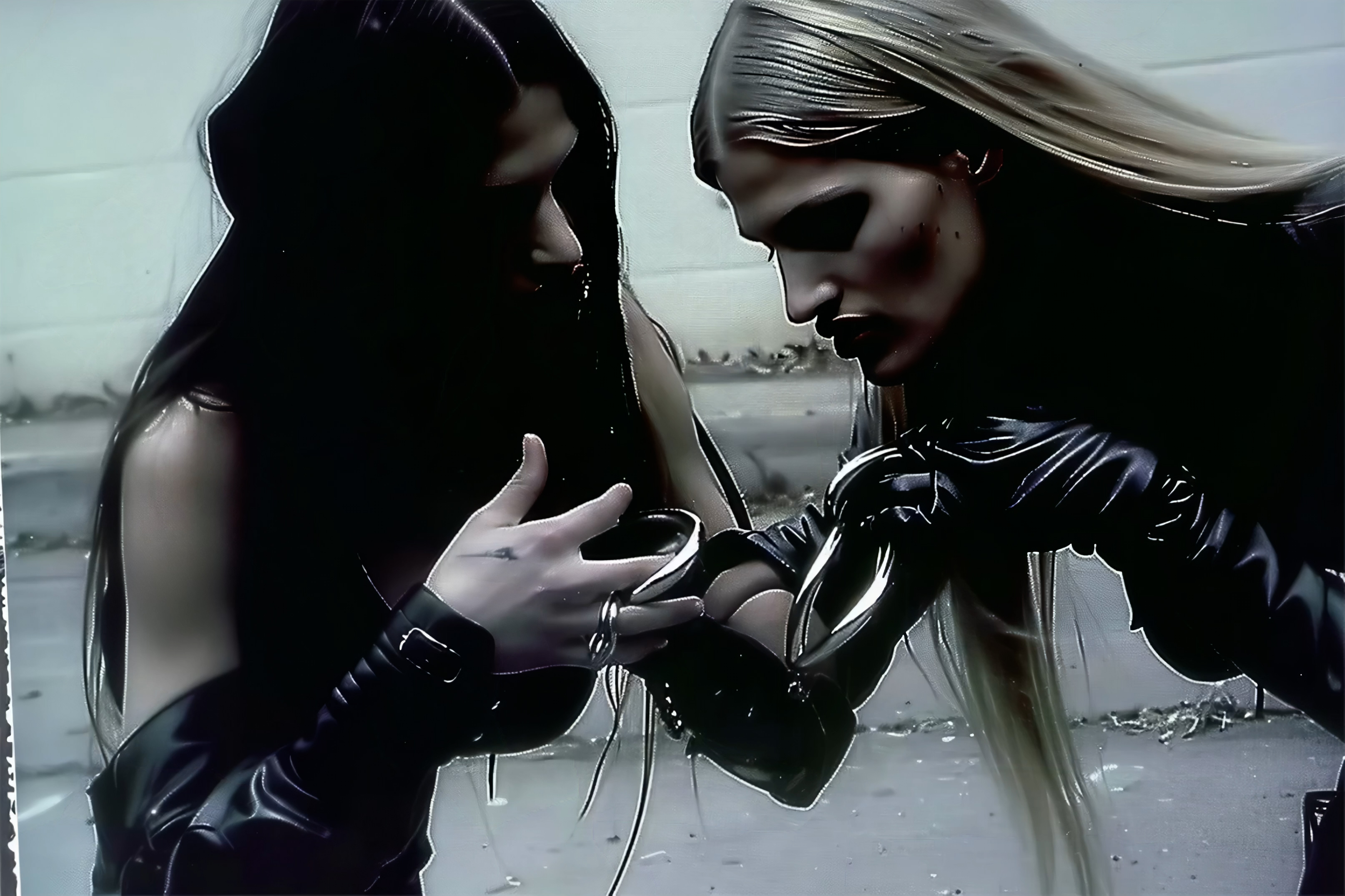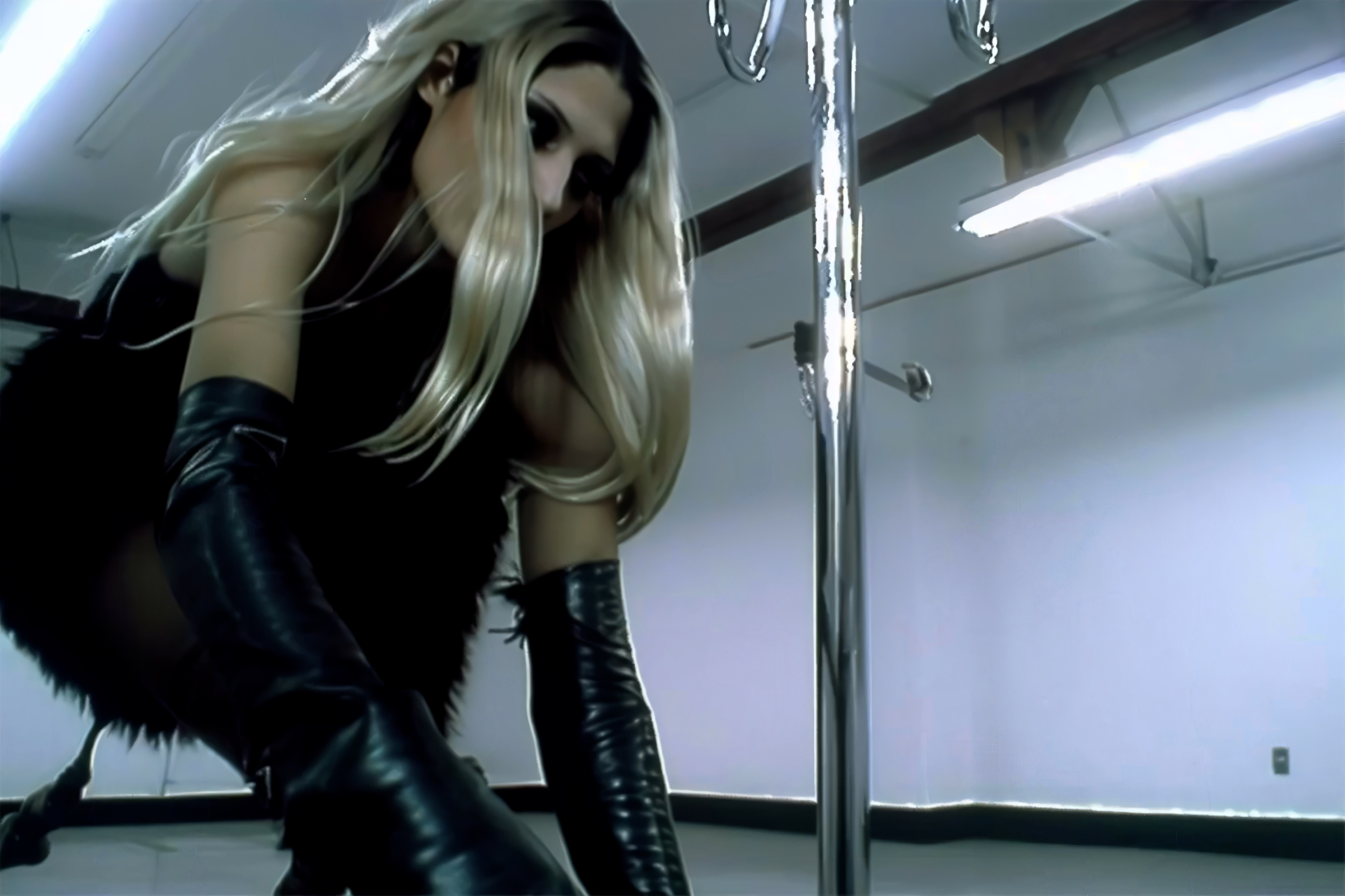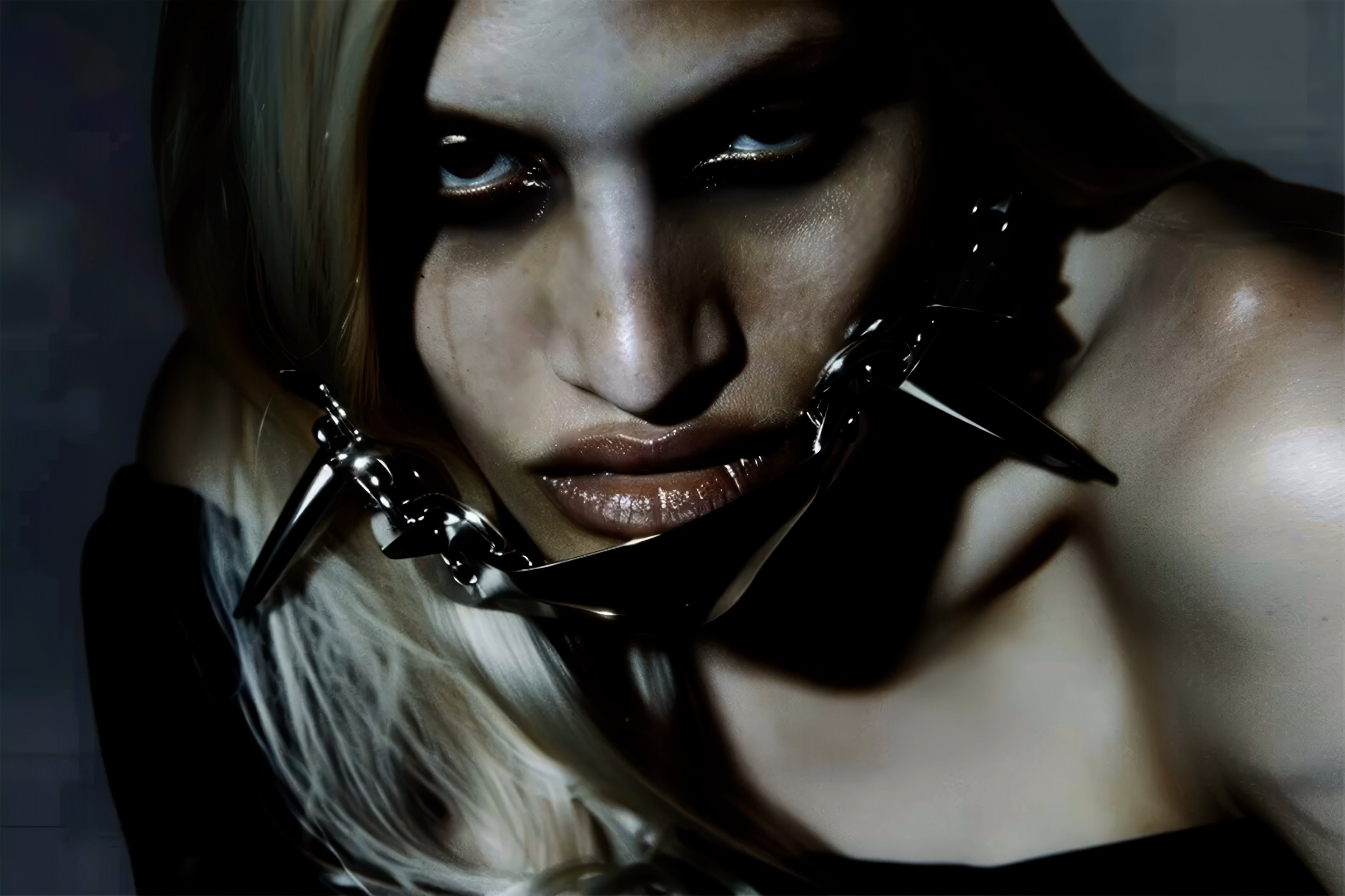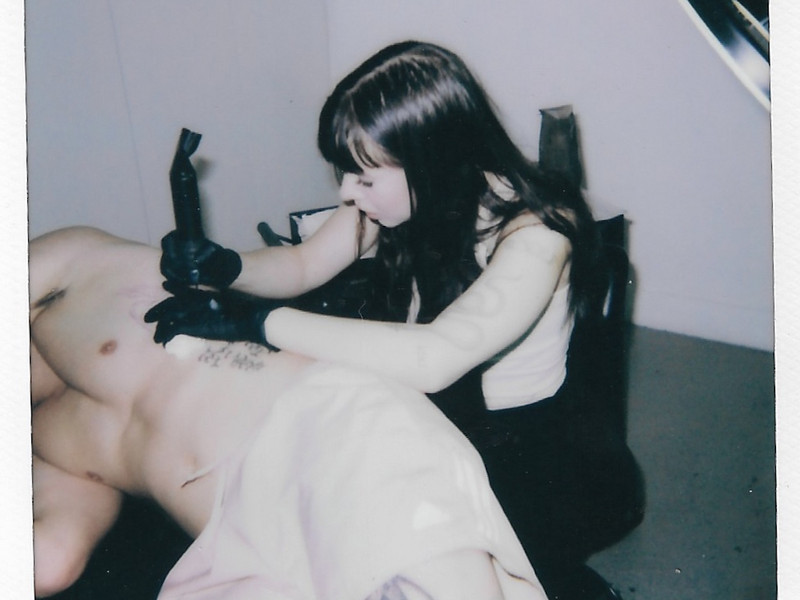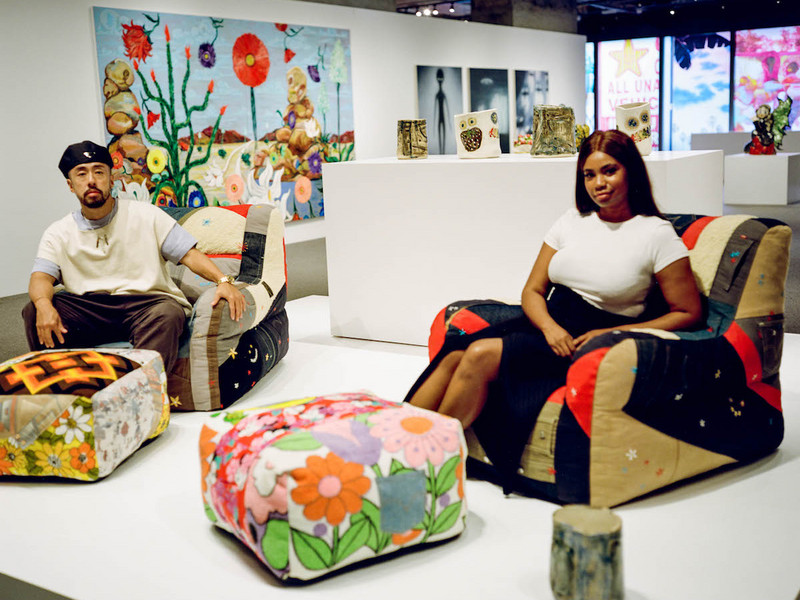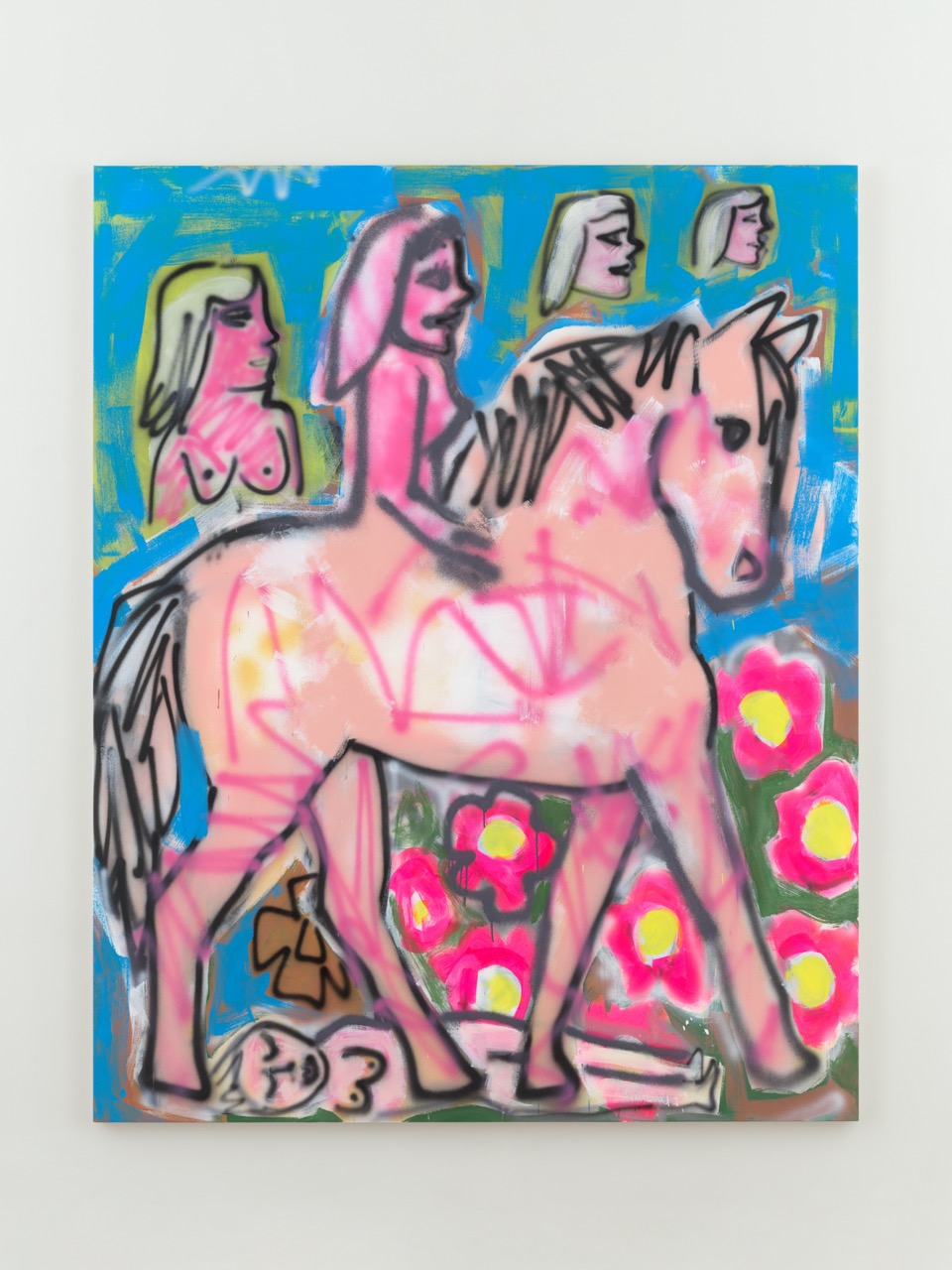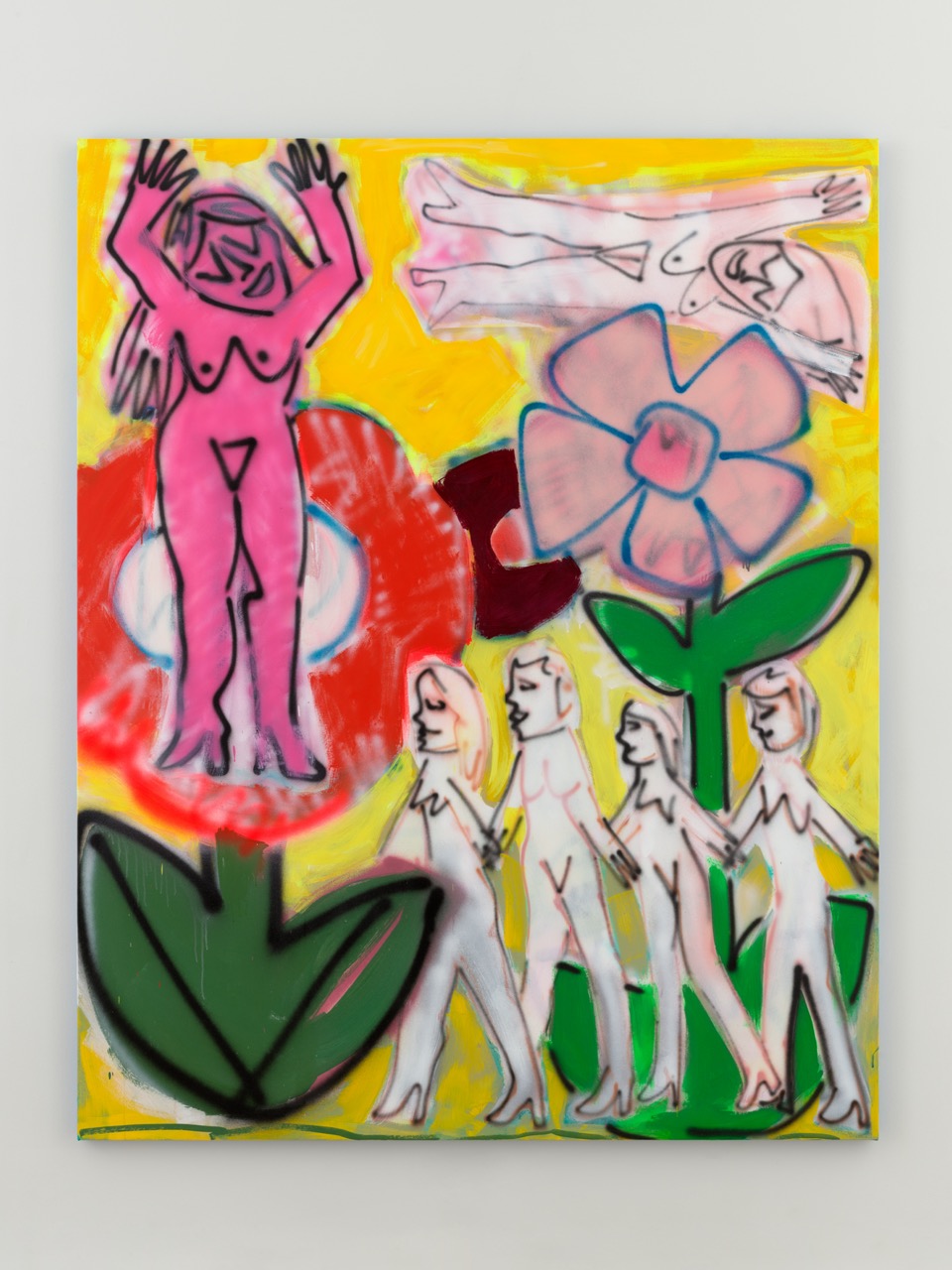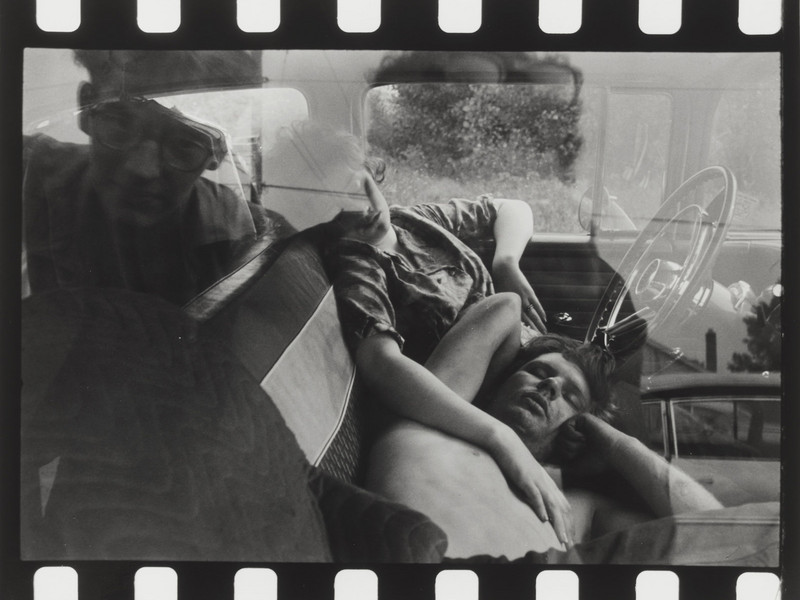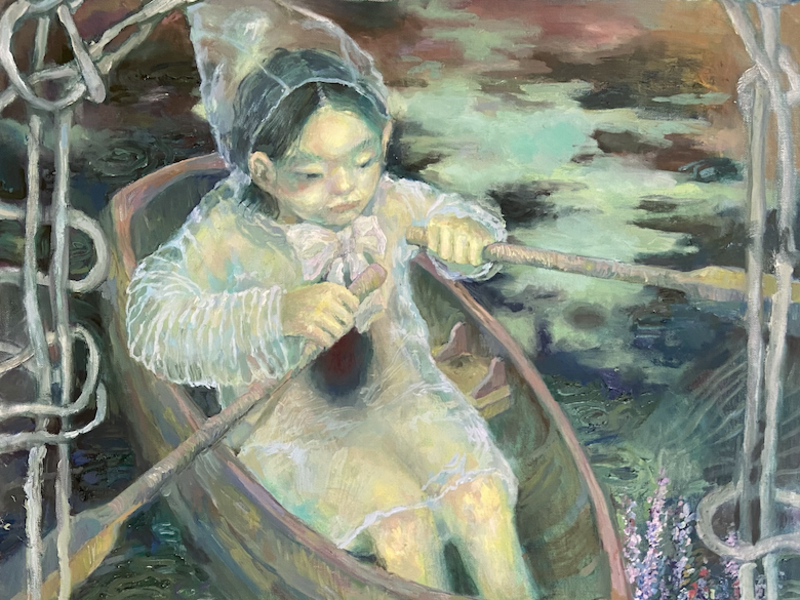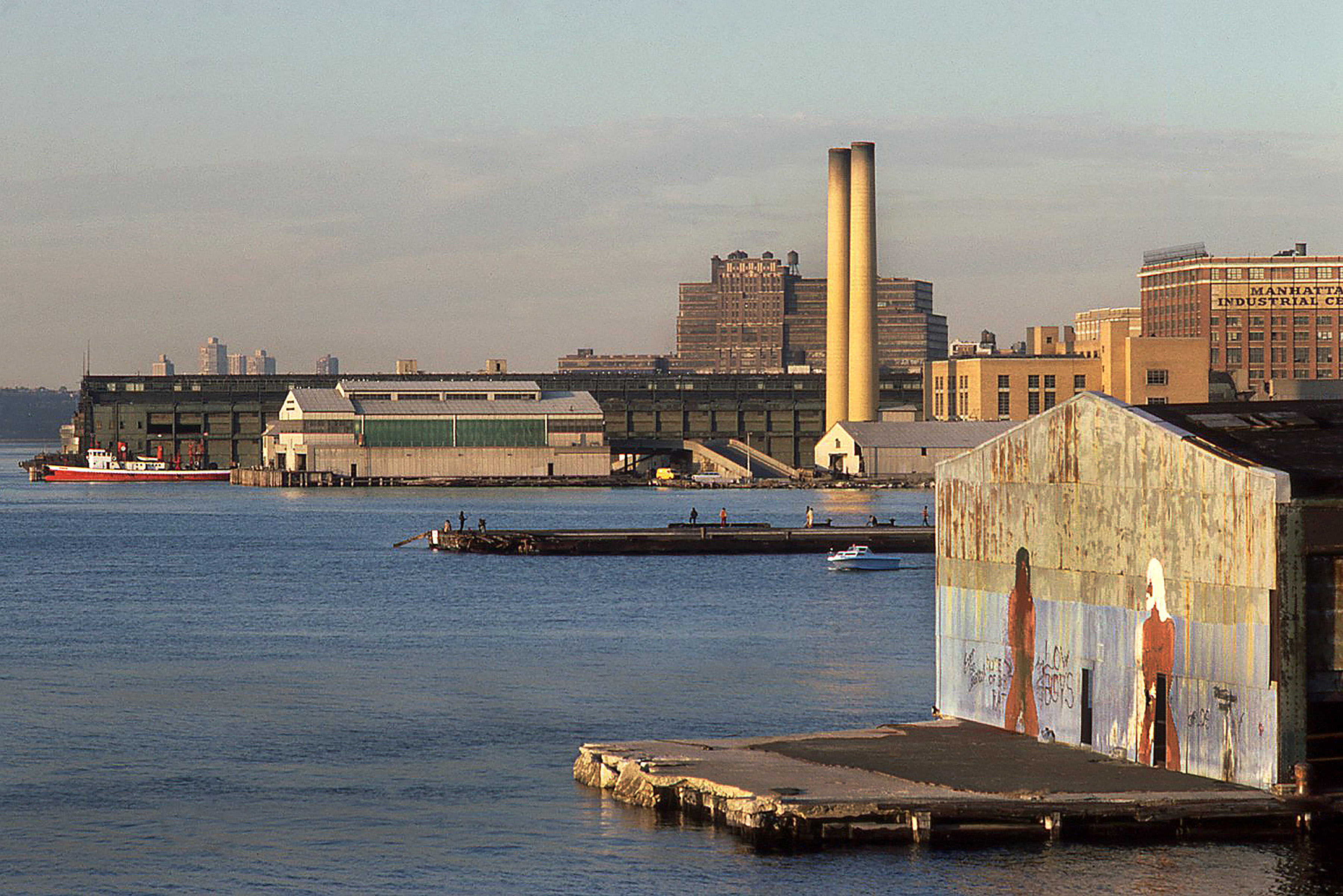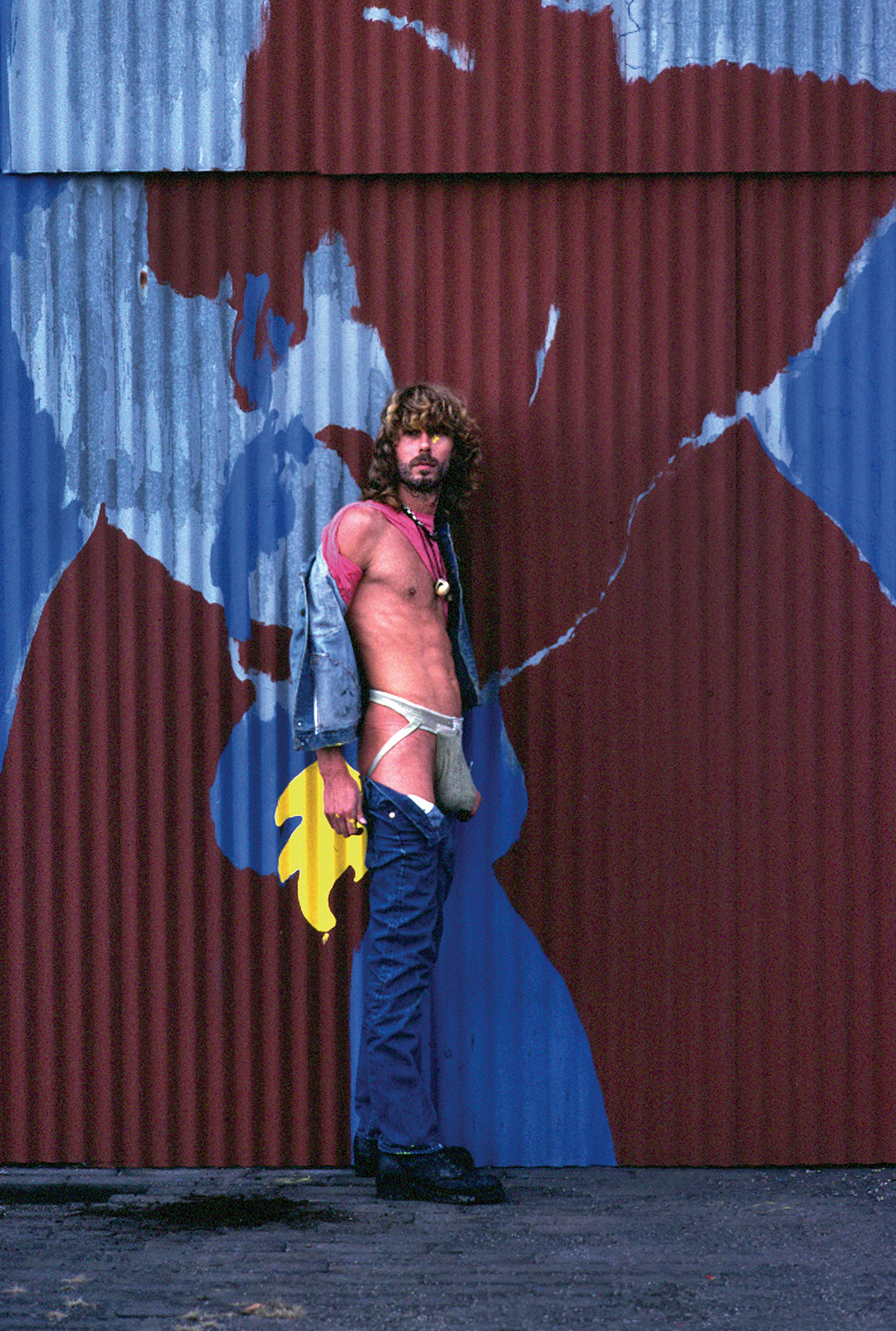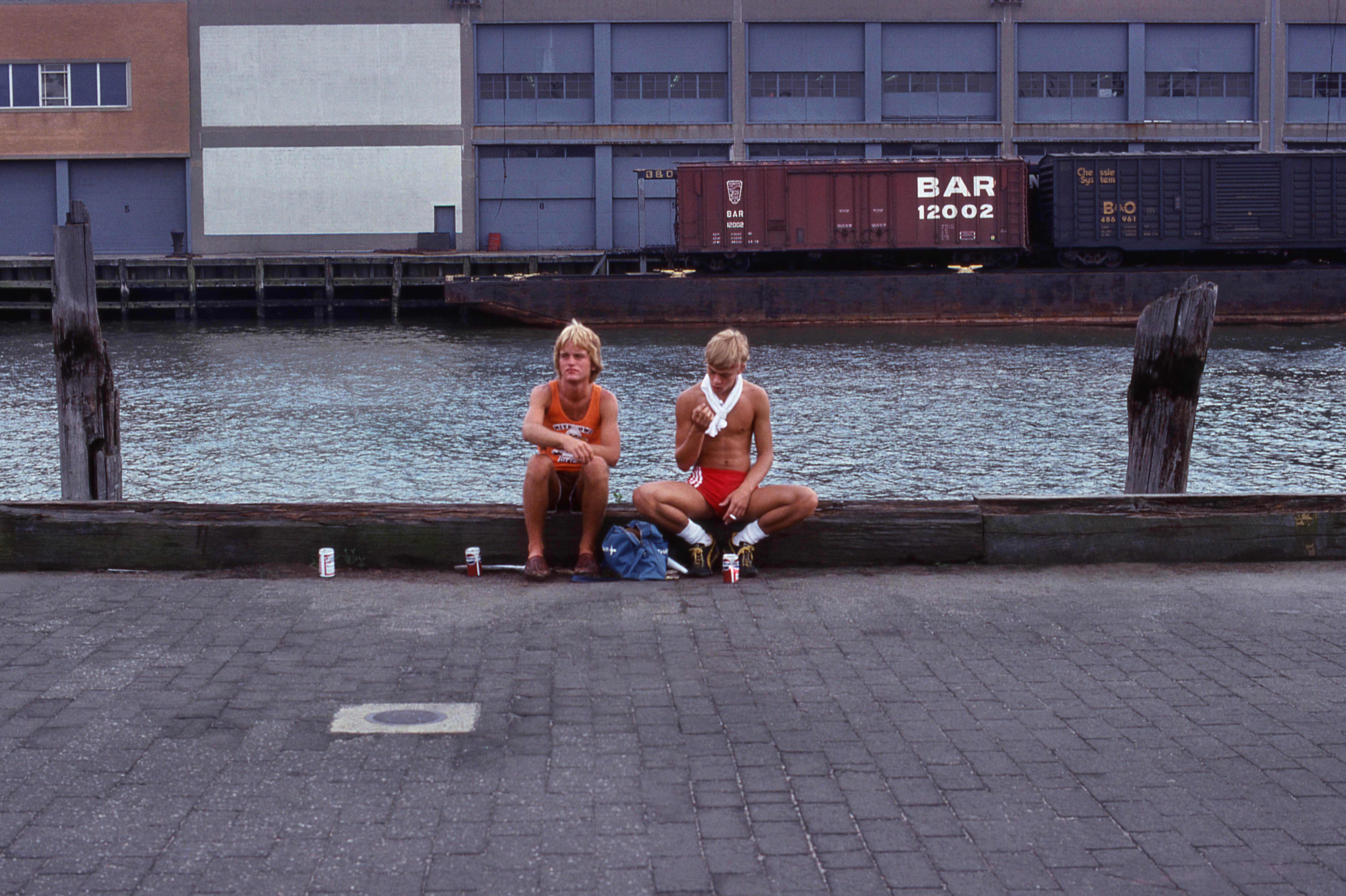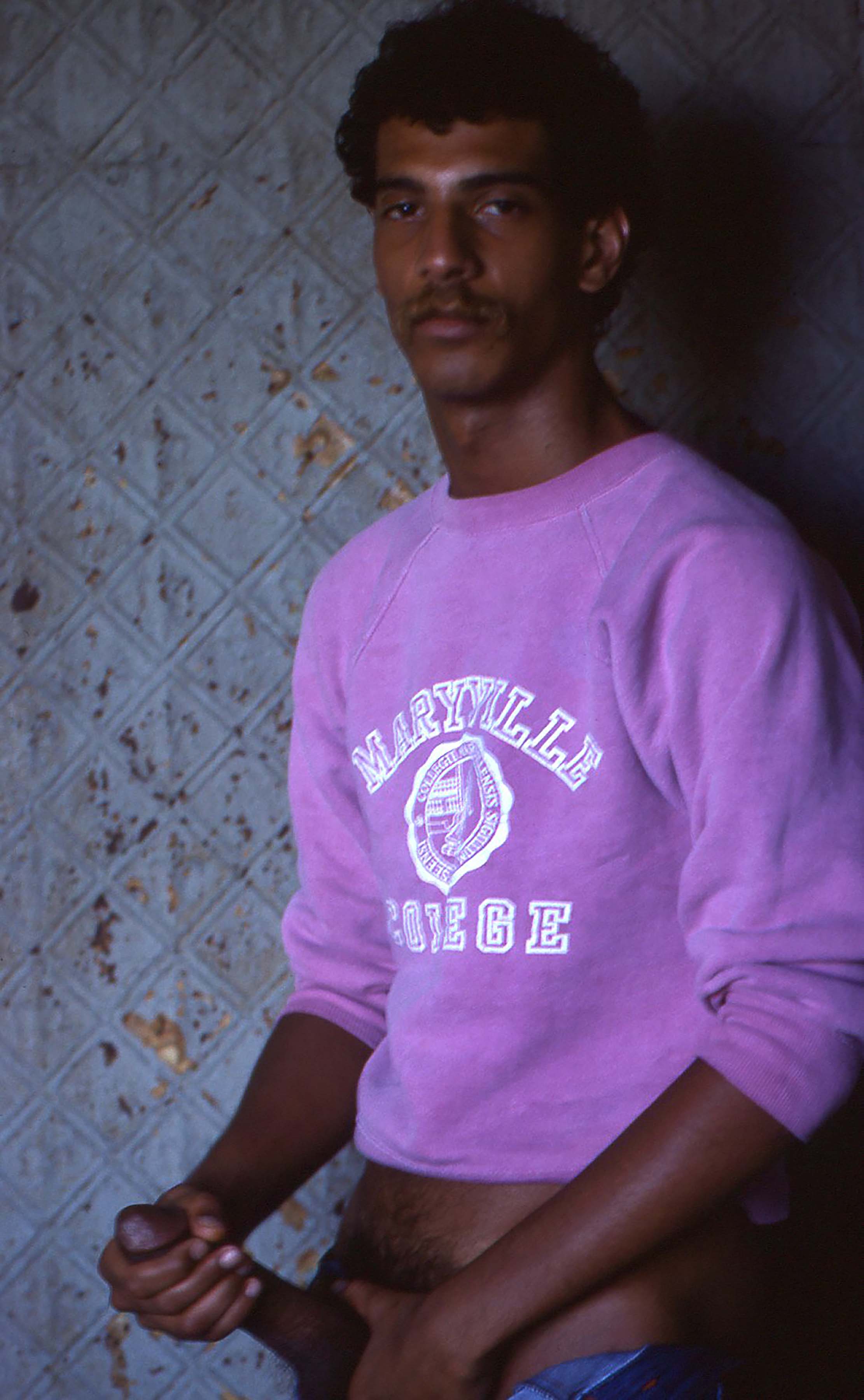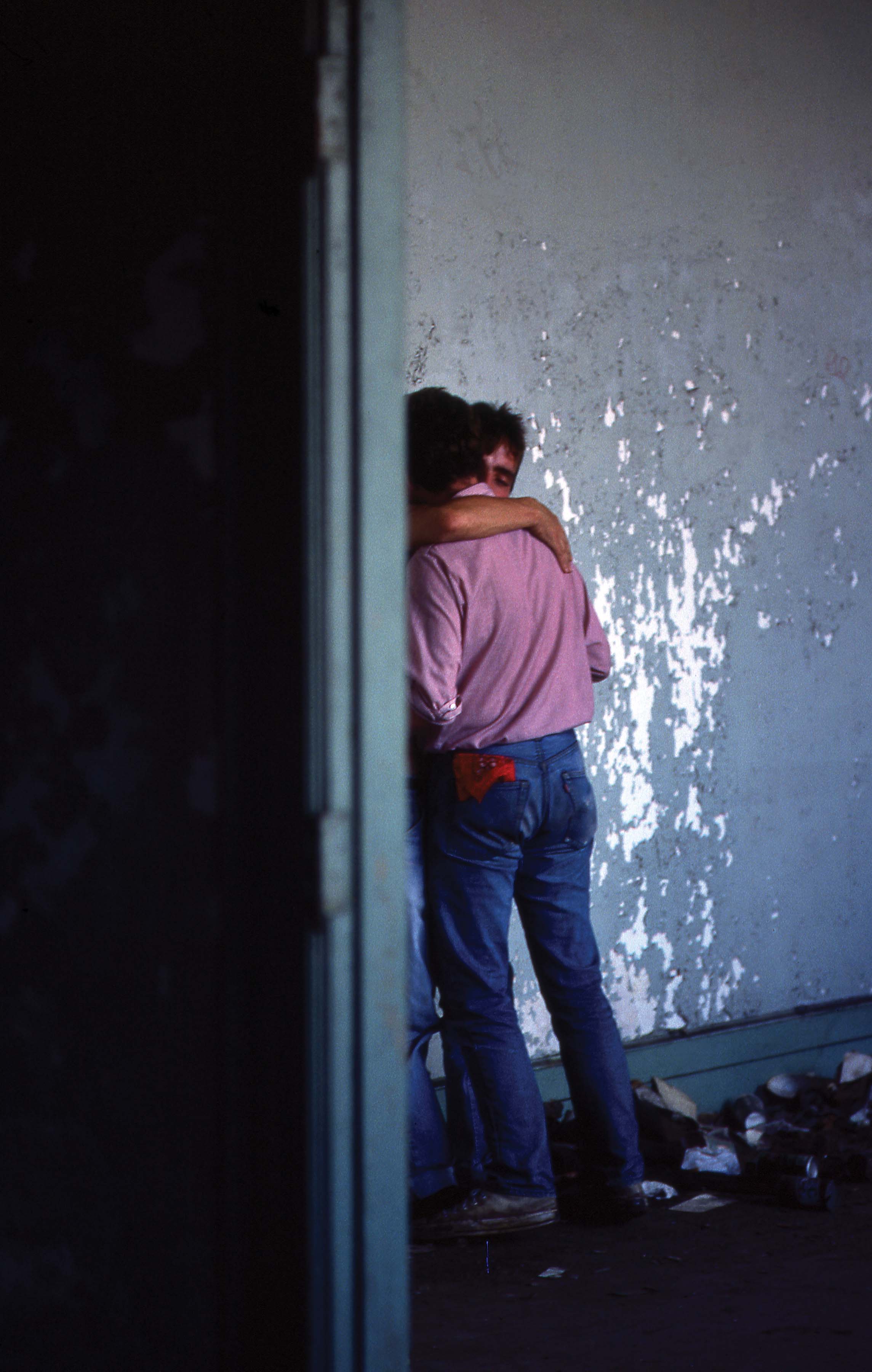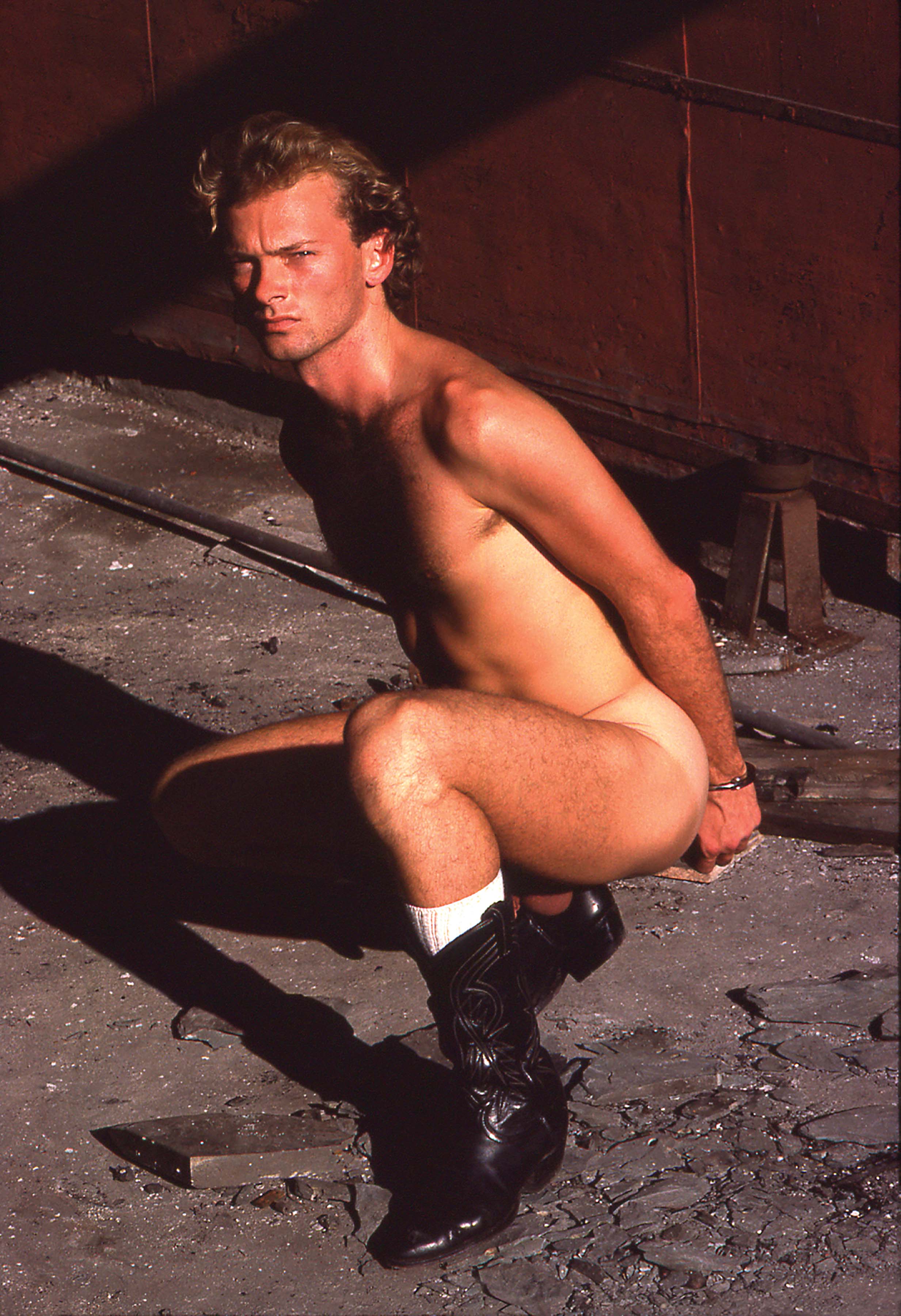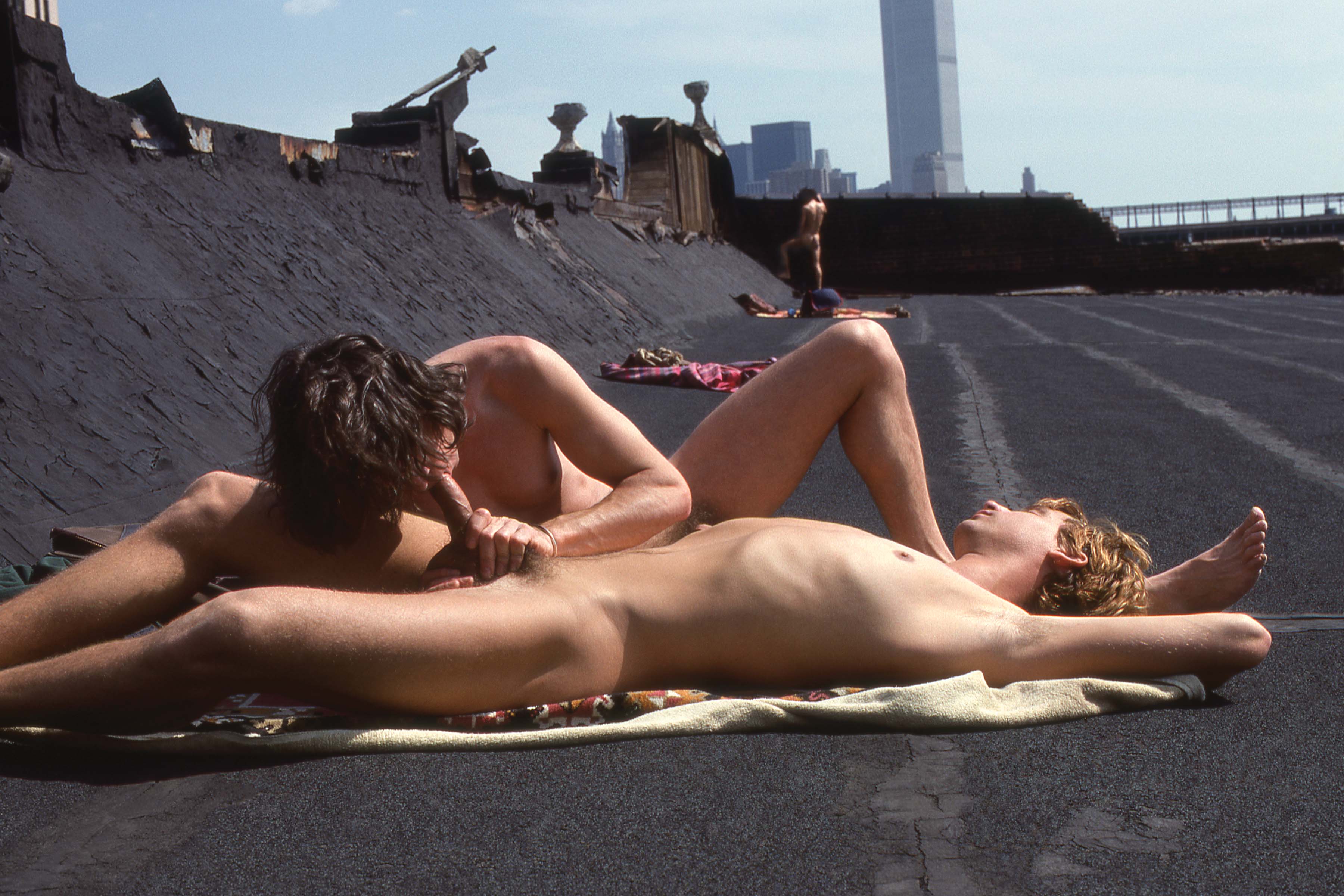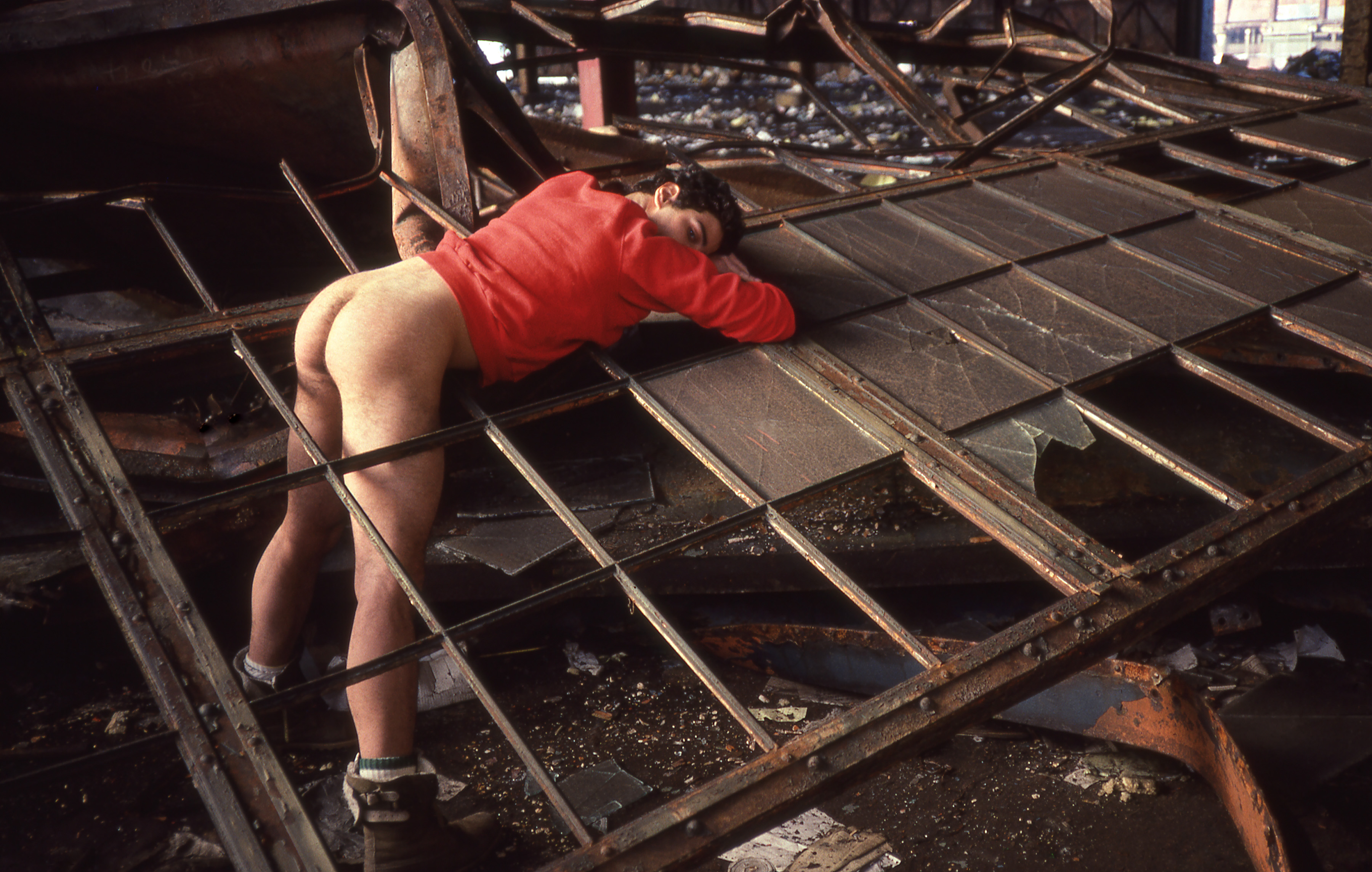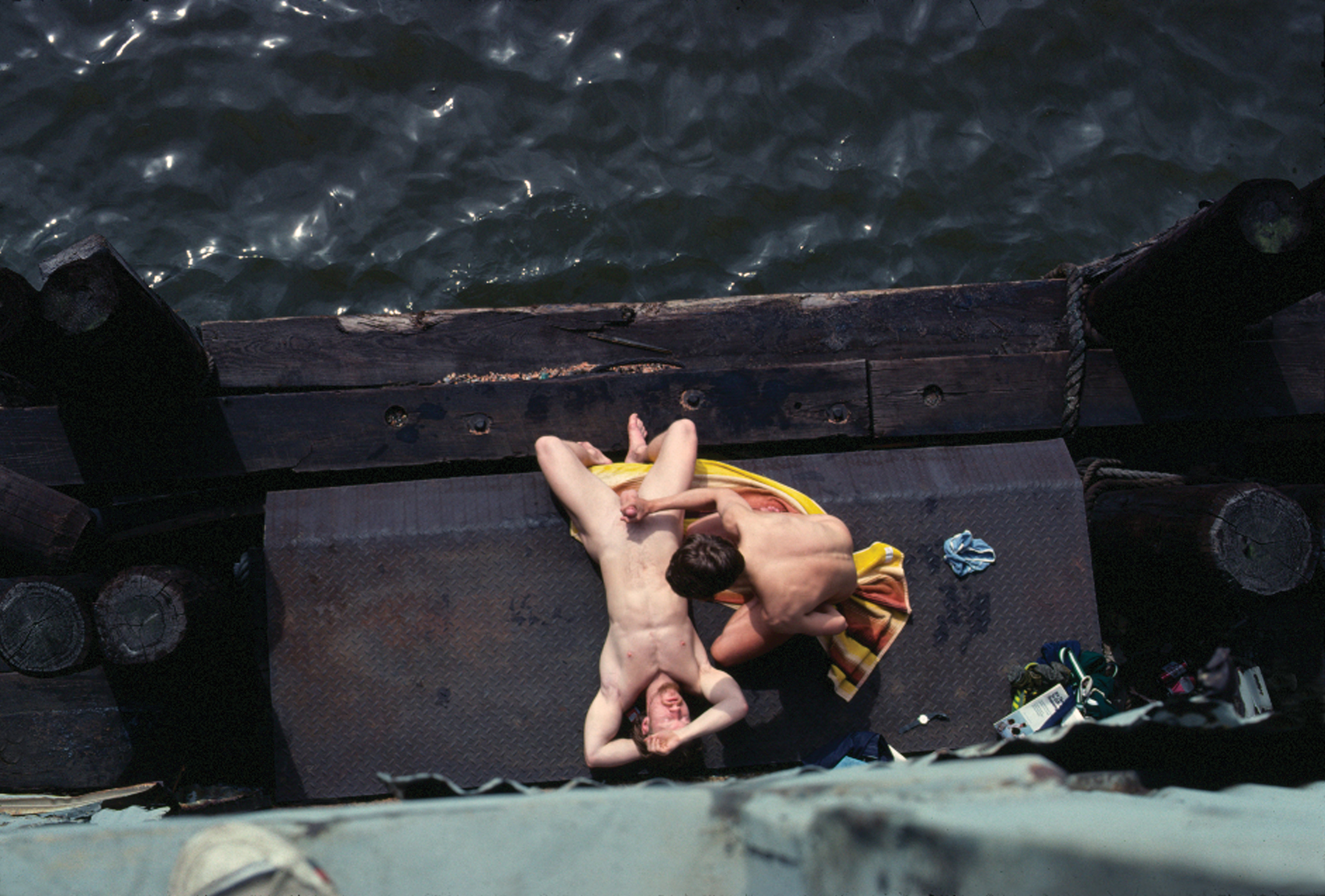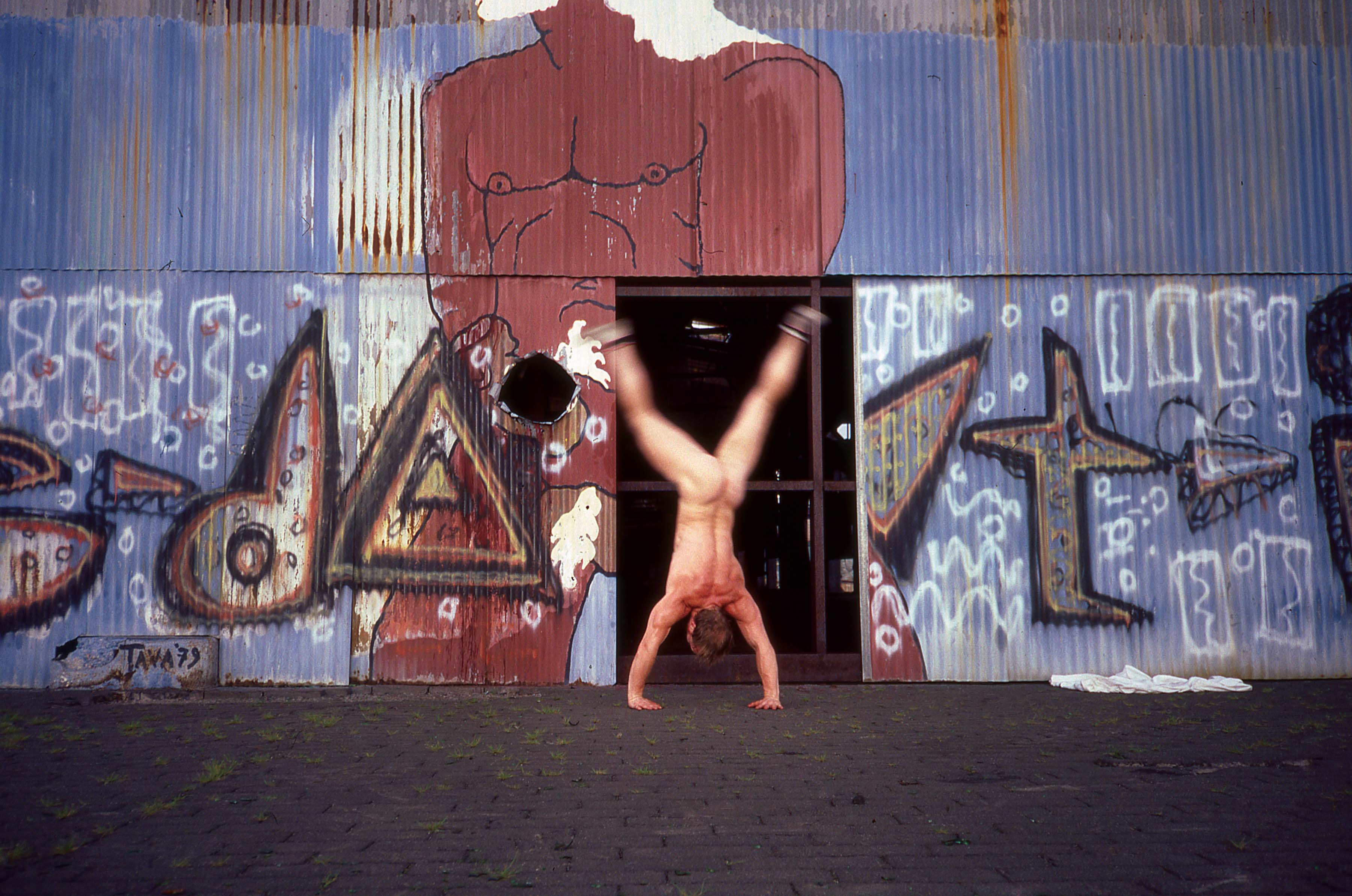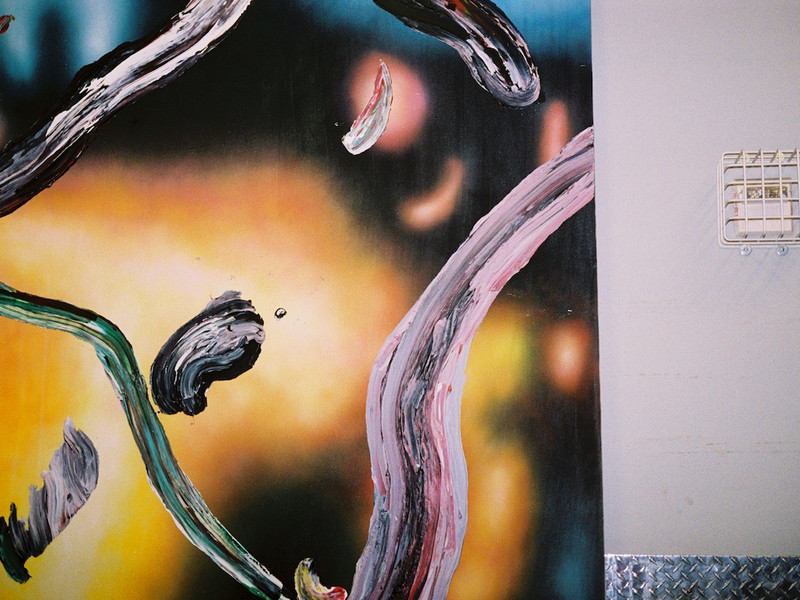White Girl Wasted
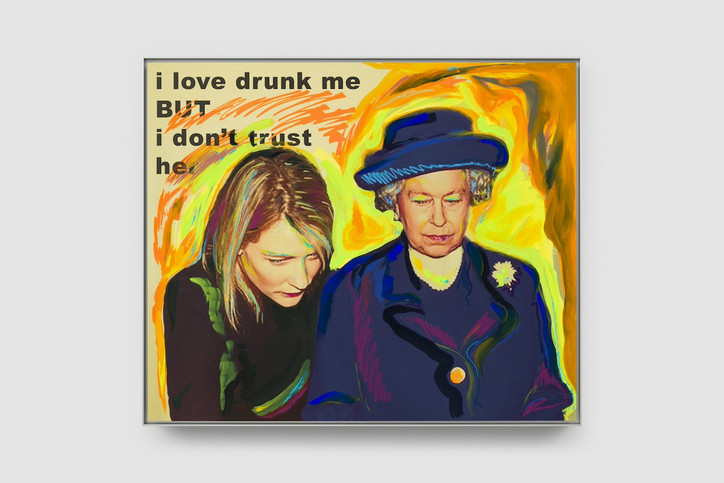
Urban Dictionary defines “White Girl Wasted” as “the phenomenon which occurs when a person consumes too much alcohol and proceeds to embarrass themselves and their friends for however long they remain conscious.” You know it when you see it: the dancing, yelling, singing, fighting, crying. It’s a tale as old as time — or at least as old as tabloids and celebrity gossip blogs. Celebrity scandals are cash cows for mainstream media outlets, capitalizing off the ugliest moments in an otherwise carefully architected Hollywood landscape. Ultimately, the media needs young starlets committing acts of self-destruction for their own publicity and revenue. Simultaneously, the star benefits from the attention too.
In Cara Benedetto’s solo exhibition WGW at Rose Easton Gallery in London, she explores the construction of white femininity and victimhood, critiquing what society thinks women in power should look like. Instead of portraying Elizabeth I herself, Benedetto depicts a polished Margot Robbie side by side with herself as the character, with the caption “OMG TINA!!!” Similarly displayed is Kristen Stewart, doubled as the late Princess Diana with her signature closed mouth smile and baby doe eyes. The facial features of Stewart reveals a yearning, one that mirrored Diana’s throughout her time as the Princess of Wales, signaling someone to save her from the circumstances and her own personal self-inflicted hell. Through her depiction of chastised historical figures and the celebrity actresses that portrayed them, Benedetto illustrates even the most privileged woman can’t help but self-destruct — but when they do, their appearances afford them a level of grace denied to most. They are vindicated by the spectacle of their spiral, because we choose to be front row viewers of the trainwrecks we can’t look away from.
In a PowerPoint video titled Hill and Lizzy @ Kegger, Hillary Clinton asks Queen Elizabeth if ‘she’s seen her bong?’ Benedetto at first, seems to be making a more tongue-in-cheek pass at the two. She subtly critiques the brashness of the subjects, yet treads towards a more nonchalant response satirizing a neo-feminist or “girl boss” take. Perhaps in 2016, at the peak of Women’s Marches and Trump protests, Benedetto would have had an explicitly critical response to these women in power through a more preachy form of captioning and symbolism. However, the paintings are indicative of changing socio-political stances and a feminist rejection of a monotonous political climate.
Benedetto neatly intertwines both an unattached and critical worldview within her work, presenting these truths for what they really are without feeling moralizing or singling out viewers. Instead she displays the indexicality of the current time period through witty details and symptoms of a generation coping with perpetual and deliberate melancholy. Labeled the Fleabag Effect, the last decade has seen a gradual shift among millennials and Gen z adopting a more dissociative attitude towards their own suffering and romanticizing self destruction as a form of coping with both external and internal triggers. It’s no coincidence that books such as Otessa Moshfegh’s My Year of Rest and Relaxation and Didion’s Play it as it Lays have dominated the literary spotlight amongst Gen Z readers. Both characters choose to self-sabotage within the enclave of comfort, monetary stability, and whiteness, despite having the resources to thrive. At times it feels illogical that we keep reading these stories and spotlighting these women, even as more dire global issues continue to compete for media attention.
In the simplest justification, and in true Fleabag fashion, it’s fun to check out from the pressures of the world, especially if you inherently hold the privilege to do so. People love these stories about this type of woman as a way to live vicariously through someone whose conventional beauty and status allows them to suffer virtually no consequences. They will continue to live a life of relative ease as long as the mess they create while doing it toes certain social and legal lines. People will choose to read about a girl walking around New York in Prada ballet flats, defecating in the foyer of an art gallery she used to work at because she got fired. This doesn’t mean she should be used as the beacon of morality and fairness, but who doesn’t enjoy imagining a life spent following all of one’s worst impulses?
WGW is on view at Rose Easton Gallery until June 15, 2024.
